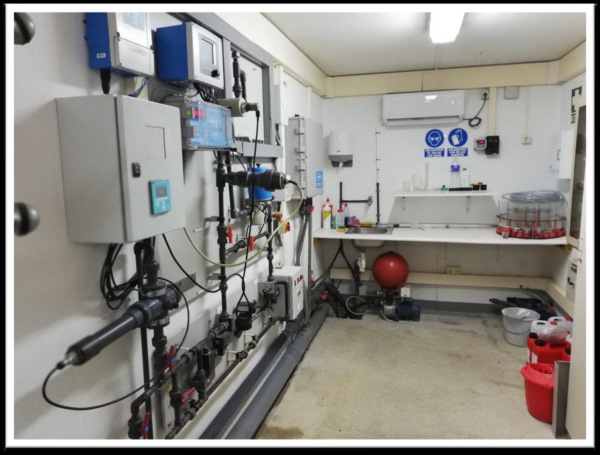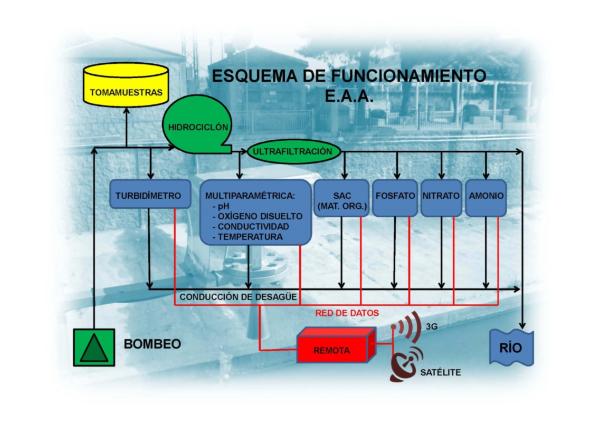The Automatic Water Quality Information System (SAICA) is a nationwide system, which aims to continuous and real-time control of the quality of surface continental waters. The SAICA represents a great advance to control the quality of the waters on a permanent basis, the stations are strategically located at points considered critical because they are located in areas that are likely to receive discharges or because they are protected areas, some of which have intakes destined for the drinking water production.
The SAICA, in the Segura Hydrographic Confederation, is made up of 11 Automatic Alert Stations (EAA). The implementation of this system was carried out in two phases. The first phase, in 1998, with the start-up of 8 stations, all of which are operational except for the EAA of Paretón, which is out of service due to a lack of contribution of resources to the homonymous channel (infringement). And the second phase, at the end of 2020 and the beginning of 2021, with the start-up of 3 stations in Vega Baja, although the Benejúzar EAA is out of service due to lack of electricity supply.
The rest of the stations implemented in the first phase have been in operation until today, except for 2 long periods, for logistical or budgetary reasons: the first of the two periods was between October 2010 and May 2011 and the Last from January 31, 2016 to September 1, 2017.
In the EAA a series of basic parameters representative of water quality (temperature, pH, conductivity, dissolved oxygen, turbidity, ammonium, organic matter, nitrates and phosphates) are continuously analysed. These parameters are very sensitive to changes in water quality, both due to natural causes and other sources of contamination.
The data obtained from the analysis equipment is sent via satellite or 3G in real time every 5 minutes to the Basin Control Center, where it is managed using special applications by qualified personnel. This allows real-time monitoring of the main discharge areas of the basin, thus being able to detect discharges quickly and thus facilitating the location of their possible causes.
The SAICA network provides valuable help and information on the status of the quality of surface inland waters whose purpose can be summarized as:

Interior of the Cenajo automatic alert station.
In the automatic alert station of San Antón there is an automatic sampling equipment that continuously collects water samples every hour, in a daily cycle of 24 samples. In this way, in the event of any contamination event, contrast samples are available to validate the data in the laboratory and, if necessary, analyze other complementary parameters.
The set of control stations, located in the rivers, the redundant communications system via satellite/3G and data reception and management in the Control Center located in the Hydrographic Confederation itself, constitute a sophisticated system of management of water quality, which, both in its conception and in the applied technology, is a pioneer in Europe of its kind, and which has been implemented in all the hydrographic basins of the national territory within the framework of the SAICA Project.
This data is sent via satellite or 3G in real time every 5 minutes to the Basin Control Center, where it is managed using special applications by qualified personnel.
The following scheme summarizes the operation of the described system:

Scheme of operation of a SAICA Automatic Alert Station